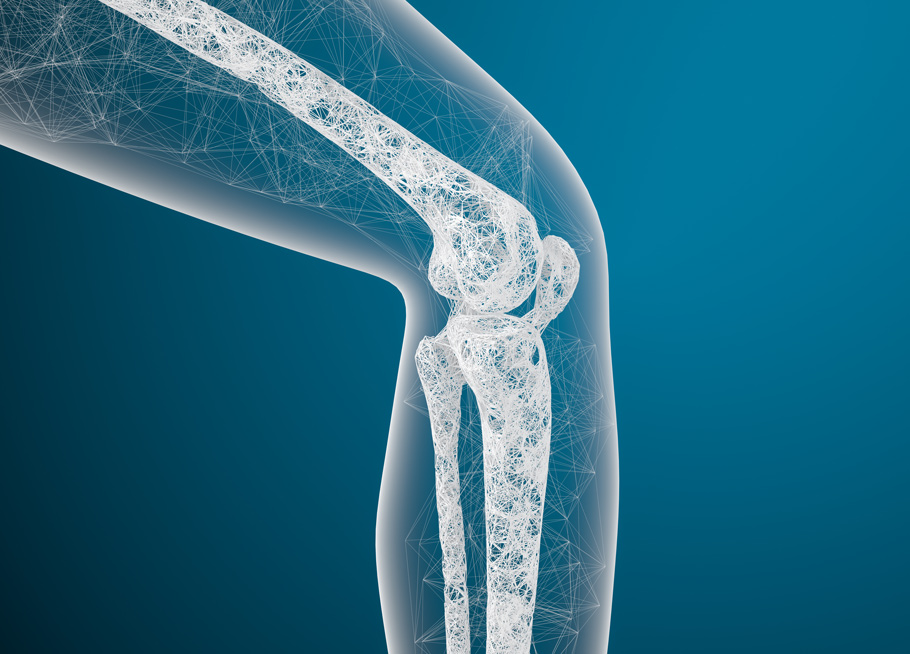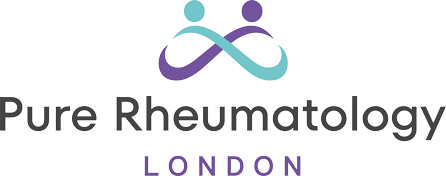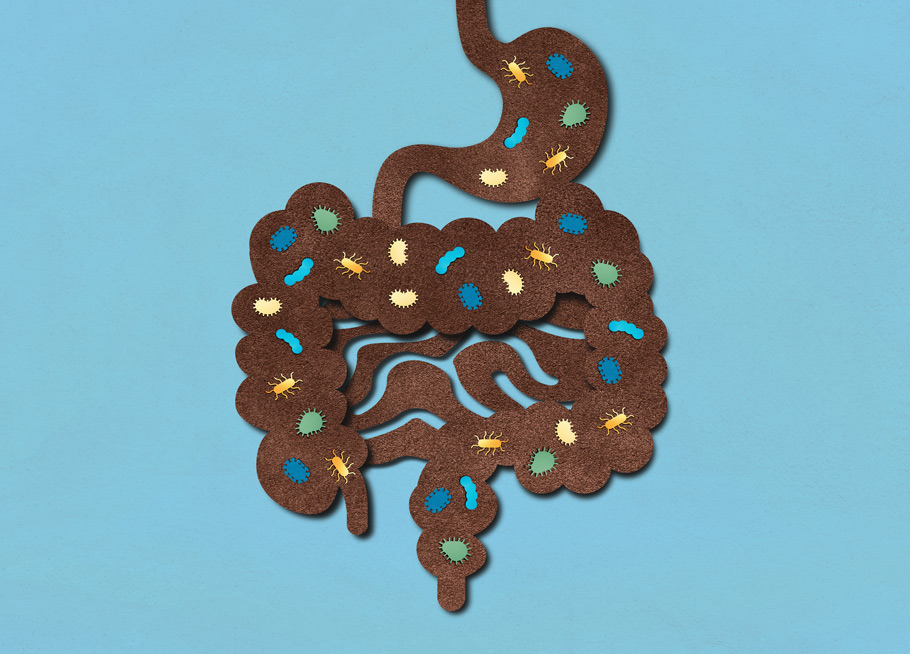
Over three million people in the UK are living with osteoporosis – that’s in excess of 4.5% of the population, making it the most common bone disease. It is also linked to injury-related deaths in people over the age of 75, with fractures (caused by falls) leading to immobility, deep vein thrombosis, mental health decline, infections and other complications.
In acknowledgement of Osteoporosis Awareness and Prevention Month, we want to emphasise the importance of education when it comes to bone health, and the steps that can be taken to reduce the risk of osteoporosis.
Dr Naveen Bhadauria, Consultant Rheumatologist at Pure Rheumatology London, explains, “Age-related osteoporosis is common, but it doesn’t have to be a fact of life. In fact, you can maintain strong bones and joints well into old age with simple, yet key, lifestyle changes. If you can implement these changes earlier in life, this will contribute significantly towards better bone health in your later years. However, it is never too late to start making healthy decisions to reduce your risk of osteoporosis and fractures.”
What Is Osteoporosis?
Osteoporosis is a condition that causes bones to weaken, making them more prone to fractures. It develops gradually over time, often without noticeable symptoms until a fracture occurs. The most common fractures due to osteoporosis occur in the hip, wrist and spine. However, the pelvis, arms and other bones may also be affected. In progressed cases, even minor movements like sneezing can cause a fracture.
Bone is a living tissue composed mainly of collagen and calcium phosphate, which provide strength and flexibility. It has three layers:
- Periosteum: A thin membrane that contains nerve and blood vessels
- Compact bone: The dense, outer layer that provides structural support
- Cancellous bone: The spongy inner layer that contains bone marrow
Osteoporosis occurs when the balance between bone formation and bone resorption is disrupted. Osteoblasts (bone-forming cells) and osteoclasts (bone-resorbing cells) play an important role in maintaining bone health. Factors such as age, genetics, hormone levels, physical activity and nutrition influence this balance.
Menopausal women are amongst those at high risk of developing osteoporosis, with one in three women affected by the disease, in comparison with one in five men. This is because, post-menopause, women’s bodies start producing less oestrogen, which is an important hormone for strengthening bones.
Diagnosing And Treating Osteoporosis
How Osteoporosis Is Diagnosed
Osteoporosis is often diagnosed after a fracture, but proactive screening can help detect bone loss earlier.
A DEXA (dual-energy X-ray absorptiometry) scan is the gold standard for measuring bone density. This quick, painless test compares the patient’s bone density against that of a healthy adult of the same age and sex, providing a score that indicates bone health.
Treatment For Osteoporosis
Treatment options depend on factors such as age, sex, fracture risk and bone density results. Common treatments include:
- Bisphosphonates: Medications that slow bone resorption and are taken as tablets or injections
- Calcium and vitamin D supplements: Essential for bone health and often recommended for those with osteoporosis
- Hormone therapy: Oestrogen therapy for postmenopausal women and testosterone therapy for men with low levels
- Zoledronate (Zoledronic acid) IV treatment: A well-researched, effective alternative for managing osteoporosis with long-lasting benefits
- Romosuzumab: This is one of the latest treatments for osteoporosis and is an injectible medication.
At Pure Rheumatology London, we offer zoledronate IV treatment with consultations available at multiple London locations.
Osteopenia: A Precursor To Osteoporosis
Osteopenia refers to lower-than-average bone density, but not low enough to be classified as osteoporosis. While it does not always require treatment, those with osteopenia should take steps to protect their bones by engaging in regular weight-bearing exercise; maintaining a balanced diet with a focus on increasing intake of calcium and vitamin D; avoiding smoking and excessive alcohol consumption; and monitoring bone density over time with regular check-ups by a rheumatologist.
Don’t be worried if you have received a diagnosis of osteopenia. The condition does not always lead to osteoporosis, and your rheumatologist can advise you on the next steps.
Daily Habits To Help Reduce The Risk Of Osteoporosis
Adopting bone-strengthening habits early can significantly reduce the risk of osteoporosis. Prevention strategies include:
Maintaining A Regular Exercise Routine
Weight-bearing exercises help build and maintain bone density, as well as strengthen the muscles around your bones, helping to build an overall stronger frame. These include activities such as:
- Walking, aiming for at least 30 minutes most days of the week
- Strength training, such as lifting weights, using resistance bands or using your bodyweight (calisthenics) to strengthen bones and muscles
- Yoga and pilates, which help with balance and coordination, reducing the risk of falls and other injuries
Eating A Calcium Rich Diet
Calcium is essential for strong bones. Try to ensure that your diet includes:
- Dairy products such as milk, cheese and plain yoghurt
- Leafy green vegetables like kale, broccoli and bok choy
- Tinned salmon and sardines (with bones)
- Fortified foods such as certain cereals, plant-based milk and orange juice with added calcium
For adults, the recommended daily intake is 700mg of calcium. Women over 50 and men over 70 should aim for 1200mg per day.
Getting Enough Vitamin D
Vitamin D helps the body absorb calcium. You can maintain healthy levels by:
- Getting safe sun exposure: Aim for 10 to 30 minutes of morning sunlight on your skin a few times per week. Avoid prolonged afternoon sun exposure without SPF, as excessive UV exposure can damage your skin.
- Eating vitamin D-rich foods: These include oily fish (such as salmon and mackerel), egg yolks and fortified dairy products.
- Taking a vitamin D supplement if you are at risk of deficiency (speak to your doctor about dosage).
Avoiding Smoking
Smoking negatively affects bone health by reducing bone mass and slowing the production of bone-forming cells. If you smoke, consider seeking support from a healthcare professional to quit; using nicotine replacement therapy or prescription medications if needed; or joining a smoking cessation support group.
Limiting Alcohol Intake
Excessive alcohol consumption can weaken bones and increase the risk of fractures. To maintain bone health:
- Stick to recommended limits; no more than 14 units spread over a week
- Choose lower-alcohol options or alcohol-free days
- Stay hydrated and pair alcohol with food to reduce its effect on the body
Improving general wellbeing
Factors such as stress and poor sleep can play havoc on your mind and body, which can make improving your bone health more challenging. Keeping your general mental and physical health in check is important for managing your bone health holistically. Try stress reducing activities such as meditation and breath work, and focus on getting good quality sleep by following a good sleep hygiene routine each night.
Osteoporosis: When To Speak To A Healthcare Professional
As you get older, it’s important to discuss bone health with your doctor, especially if you have risk factors for osteoporosis. Your doctor may recommend a bone density (DEXA) scan to assess your bone health; suggest lifestyle changes or medications to prevent bone loss; and test your vitamin D and calcium levels.
If you are concerned about your bone health or at risk of osteoporosis, book a consultation with Dr. Naveen Bhadauria at Pure Rheumatology London for expert advice, diagnosis and treatment options. To book your appointment, use our online booking form or call 0207 126 7264.
Article by Dr. Naveen Bhadauria


